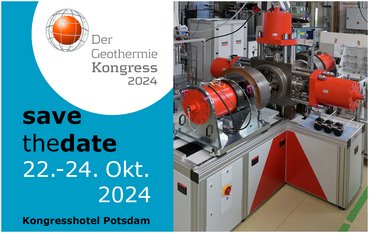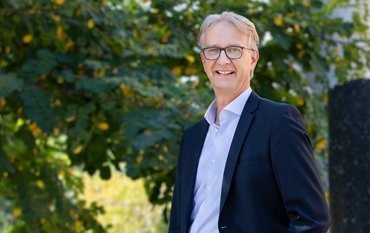Pilot project ends after 13 years of research in Ketzin/Havel
After 13 years of successful research work, the Ketzin Project has now come to an end. In this city on the River Havel, the GFZ German Research Centre for Geosciences has investigated whether carbon dioxide (CO2) can be stored safely and permanently in the underground and how it behaves at depth. For this purpose, between 2008 and 2013 more than 67,000 tons of CO2 were pumped, via an injection well, into a so-called storage horizon. There, at a depth of about 630 meters, porous sandstone traversed by salt-bearing groundwater prevails - a "salt aquifer".
During a closing conference, the researchers involved have had the opportunity to take stock and to discuss with European experts the prospects for carbon capture and storage (CCS). Project manager, Dr. Axel Liebscher, explains: "We have shown that carbon dioxide can be safely inserted into the underground and stored. The powerful layers of claystone above the storage horizon provide a reliable seal."
Research work in Ketzin/Havel began with preliminary investigations in 2004. From the beginning on, the town and the local population were incorporated into the research project. To this day, the project enjoys high acceptance. The actual compression of the CO2 took place from July 2008 on. For this purpose mainly food-grade carbon dioxide, as is known, for example, from water bubblers was used. Over a period of five years, tanker trucks brought the CO2 to Ketzin, where it was pumped into the underground through an injection well. Four other drill holes were drilled to monitor the spread of CO2 in the underground as well as the density of the reservoir using state-of-the-art geochemical and geophysical methods.
After the end of the CO2 injection, monitoring of the storage process was continued for a further four and a half years in order to keep check upon the stability of the reservoir. Monitoring has shown no irregularities in the reservoir and will be completed by the end of this year. Then the last drill holes will be filled and the soil surface returned to its original state.
The Scientific Executive Director and Chairman of the Board of the GFZ, Prof. Dr. Reinhard Hüttl, points out: "With our research work, we have shown society an option that can help reduce the CO2 input into the atmosphere. It is, however, the responsibility of politics to decide whether this path should be pursued in the future." According to Prof. Hüttl there has been considerable resistance in Germany whereas in other European countries such as Norway further CCS projects have been planned also on a large scale.
Further Information:
http://www.co2ketzin.de/dialog-amp-kontakt/fragen-und-antworten/
Photos are available here: <link medien-kommunikation mediathek bildarchiv co2manco2sink>www.gfz-potsdam.de/medien-kommunikation/mediathek/bildarchiv/co2manco2sink/
Contact:
Josef Zens, Dipl.-Geog.
Leiter der Presse- und Öffentlichkeitsarbeit
Deutsches GeoForschungsZentrum GFZ
Telegrafenberg
14473 Potsdam
Tel.: +49 (0)331/288- 1040
Fax: +49 (0)331/288- 1044
E-Mail: josef.zens@gfz-potsdam.de





![[Translate to English:] Martin Herold standing in front of the library on the Telegrafenberg](/fileadmin/_processed_/c/d/csm_Martin_Herold_d385ee4dd9.jpeg)
![[Translate to English:] Many people are listening to a presentation in the GFZ lecture hall.](/fileadmin/_processed_/c/a/csm_1_Bild1_hell_b9c0e9f5ed.jpeg)





![[Translate to English:] Both scientists sitting on stools in front of a wall of books in the Telegrafenberg library](/fileadmin/_processed_/6/6/csm_Buiter_Castell_DORA_4_e87cb1ea18.jpeg)
![[Translate to English:] Gruppenbild mit 4 Personen](/fileadmin/_processed_/8/d/csm_20241017_GFZ-Emmerman-Medal-005_web_reinhardtundsommer_21a414fa4a.jpeg)






![[Translate to English:] Ice landscape with five red tents](/fileadmin/_processed_/8/9/csm_Zeltlager_auf_dem_Eis_Urheberin_Jenine_McCutcheon_5ced2d523b.jpeg)











